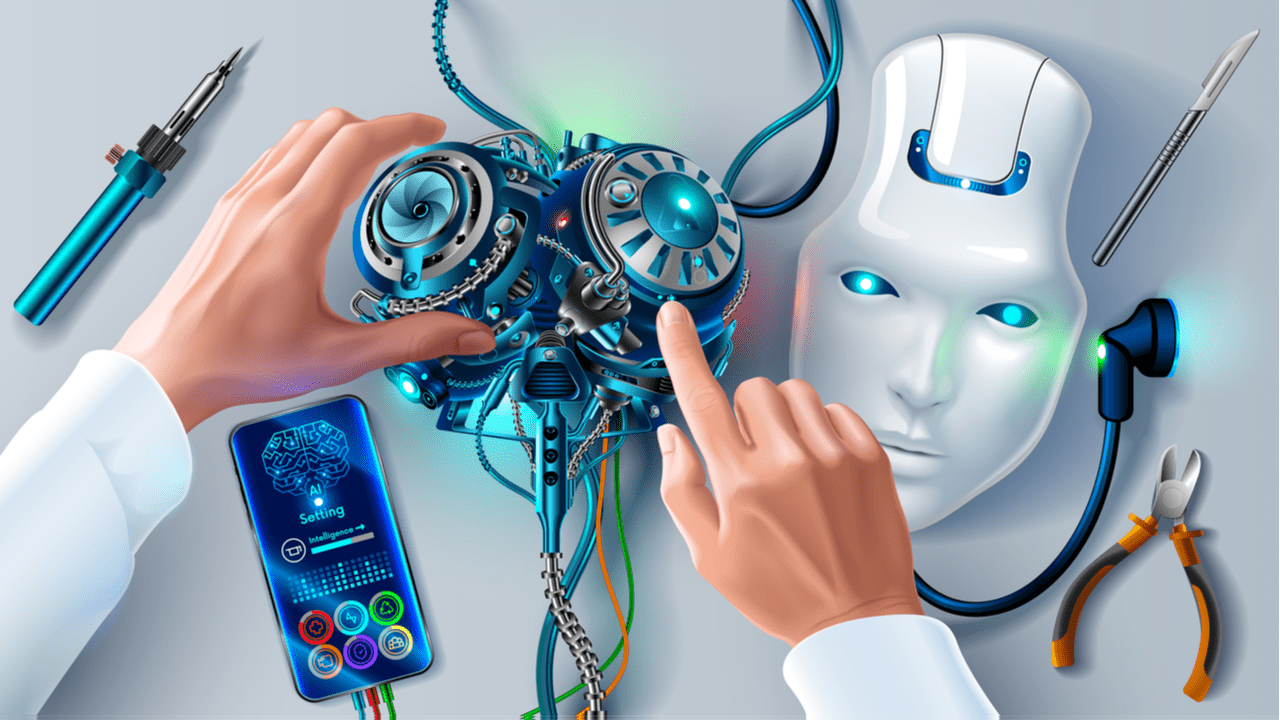Robotics has transformed from a dream of inventors to a driving force behind the modern world. What began as simple mechanical devices has evolved into intelligent, adaptive systems that influence industries, healthcare, education, and even daily life. Understanding the evolution of robotics helps us appreciate how human creativity and technological progress have shaped the intelligent machines we rely on today.
Table of Contents
Early Beginnings: The Birth of Mechanical Innovation
The story of robotics begins long before electricity or computers. Ancient civilizations were fascinated by the idea of self-operating machines. As early as 300 BCE, the Greek engineer Ctesibius built water clocks with moving figures, while Hero of Alexandria created mechanical automata powered by air and water pressure. These early inventions showed that humans have always been intrigued by the concept of artificial life and motion.
During the Islamic Golden Age, inventors like Al-Jazari further advanced mechanical engineering. His famous “Book of Knowledge of Ingenious Mechanical Devices” described water-driven clocks, automated musical instruments, and even humanoid machines. These early creations laid the foundation for what we now recognize as robotics machines designed to imitate human actions.
The Industrial Revolution: Automation Takes Shape
The 18th and 19th centuries marked a turning point in robotics history. With the rise of the Industrial Revolution, automation became essential for mass production. Machines like textile looms, steam engines, and automated tools transformed labor and manufacturing. Inventors began exploring mechanical systems that could perform repetitive tasks with minimal human involvement.
In 1801, Joseph Marie Jacquard’s loom introduced punch cards to control weaving patterns—an early form of programmable automation. This concept later influenced computer technology, proving how deeply robotics and computing are interconnected. By the late 19th century, mechanical efficiency and precision had become the backbone of industrial development.
The 20th Century: Birth of Modern Robotics
The 20th century witnessed the rise of true robotics. In 1921, Czech playwright Karel Čapek introduced the word “robot” in his play R.U.R. (Rossum’s Universal Robots). The term came from the Czech word robota, meaning “forced labor.” It perfectly captured society’s growing interest in machines that could perform human tasks.
By the 1950s, robotics became a real engineering field. In 1954, George Devol invented the first programmable robot, Unimate, which was later used by General Motors in assembly lines. This marked the beginning of industrial robotics—machines performing precise, repetitive tasks such as welding, painting, and packaging.
As computing and electronics advanced, so did robots. The integration of sensors, microprocessors, and artificial intelligence in the late 20th century gave rise to robots capable of decision-making, vision processing, and environmental adaptation.
The 21st Century: Smart, Collaborative, and Autonomous Robots
Modern robotics has entered the age of intelligent automation. Today’s robots are not just tools; they are collaborative partners. Technologies like machine learning, computer vision, and Internet of Things (IoT) have made robots more autonomous and capable of learning from experience.
Industrial robots have evolved into collaborative robots (cobots) that safely work alongside humans. In healthcare, robots assist surgeons with high-precision operations and support patient rehabilitation. In agriculture, autonomous machines monitor soil, harvest crops, and optimize yields. Household robots, from vacuum cleaners to smart assistants, are now part of everyday life.
Robotics is also expanding into space exploration and disaster management. NASA’s Perseverance Rover and robotic drones demonstrate how far technology has come from mechanical gears to AI-driven exploration tools that operate millions of miles away from Earth.
The Role of AI in the Future of Robotics
The future of robotics lies in the deep integration of artificial intelligence. AI enables robots to understand environments, recognize emotions, predict outcomes, and interact more naturally with humans. Machine learning allows robots to adapt through experience rather than pre-programmed commands.
Humanoid robots like Sophia and advanced chatbots showcase how robotics and AI can merge to create social and emotional intelligence in machines. This not only enhances productivity but also transforms education, elderly care, and customer service.
Challenges and Ethical Considerations
While robotics continues to revolutionize industries, it also raises important questions. Will robots replace human jobs? How can we ensure ethical AI behavior? These issues demand responsible innovation guided by transparency, accountability, and human oversight. Governments, researchers, and companies must collaborate to create policies that balance progress with ethical responsibility.
Conclusion: A Future Powered by Robotics
From ancient automata to AI-driven humanoids, the evolution of robotics reflects humanity’s constant pursuit of innovation. Robots have moved beyond factories into homes, hospitals, and even outer space reshaping how we live and work.
As technology continues to evolve, the next chapter of it will focus on human-robot collaboration, sustainability, and emotional intelligence. The future belongs to intelligent machines that not only perform tasks but also understand and assist humanity in meaningful ways. The journey of it is far from over it’s only just beginning.
Also Check Brain-Computer Interfaces – Ultimate Detailed Guide – 2025


1 thought on “Evolution of Robotics – Ultimate Comprehensive Guide – 2025”